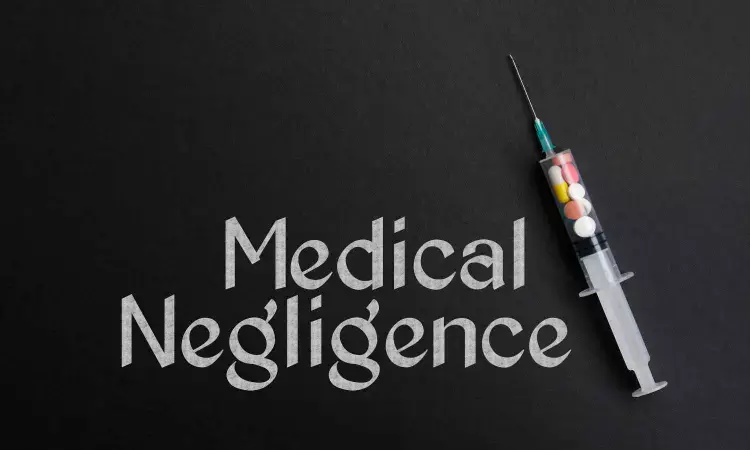- Home
- Medical news & Guidelines
- Anesthesiology
- Cardiology and CTVS
- Critical Care
- Dentistry
- Dermatology
- Diabetes and Endocrinology
- ENT
- Gastroenterology
- Medicine
- Nephrology
- Neurology
- Obstretics-Gynaecology
- Oncology
- Ophthalmology
- Orthopaedics
- Pediatrics-Neonatology
- Psychiatry
- Pulmonology
- Radiology
- Surgery
- Urology
- Laboratory Medicine
- Diet
- Nursing
- Paramedical
- Physiotherapy
- Health news
- Fact Check
- Bone Health Fact Check
- Brain Health Fact Check
- Cancer Related Fact Check
- Child Care Fact Check
- Dental and oral health fact check
- Diabetes and metabolic health fact check
- Diet and Nutrition Fact Check
- Eye and ENT Care Fact Check
- Fitness fact check
- Gut health fact check
- Heart health fact check
- Kidney health fact check
- Medical education fact check
- Men's health fact check
- Respiratory fact check
- Skin and hair care fact check
- Vaccine and Immunization fact check
- Women's health fact check
- AYUSH
- State News
- Andaman and Nicobar Islands
- Andhra Pradesh
- Arunachal Pradesh
- Assam
- Bihar
- Chandigarh
- Chattisgarh
- Dadra and Nagar Haveli
- Daman and Diu
- Delhi
- Goa
- Gujarat
- Haryana
- Himachal Pradesh
- Jammu & Kashmir
- Jharkhand
- Karnataka
- Kerala
- Ladakh
- Lakshadweep
- Madhya Pradesh
- Maharashtra
- Manipur
- Meghalaya
- Mizoram
- Nagaland
- Odisha
- Puducherry
- Punjab
- Rajasthan
- Sikkim
- Tamil Nadu
- Telangana
- Tripura
- Uttar Pradesh
- Uttrakhand
- West Bengal
- Medical Education
- Industry
1-year-old dies after alleged delays at 5 hospitals in Uttarakhand

Medical Negligence
Dehradun: In a tragic incident, a one-year-old child passed away after being shuffled across five hospitals in four districts over six distressing days. The child, suffering from severe dehydration, reportedly faced repeated delays in treatment, ambulance services, and a lack of specialised care, ultimately leading to his death.
The incident has sparked outrage and prompted a high-level government inquiry into the incident. Despite being placed on a ventilator in Haldwani, the critically ill child could not survive the cumulative delays and inadequate care he received across the journey.
According to the news reports, the son of an army jawan began vomiting and was unable to breastfeed on July 10, early signs of severe dehydration. His family rushed him to the local Primary Health Centre (PHC), only to discover that it lacked even a basic pediatric setup. Over the next six days, the infant was shuffled through an alarming sequence of referrals: from Gwaldam to Baijnath’s Community Health Centre, then to the District Hospital in Bageshwar, followed by facilities in Almora and finally to Haldwani’s Sushila Tiwari Government Hospital.
The family claims that gross negligence occurred during this period, citing inattentiveness by medical staff and significant delays in ambulance response. The family mentioned that in one instance, the ambulance took more than two hours to arrive, ultimately compelling the child's parents to appeal to the District Magistrate for urgent assistance. The absence of specialised paediatric ICU facilities at local health centres further compounded the situation, leading to multiple referrals and the loss of crucial time in the child’s treatment.
This tragic case reveals the systemic gaps in Uttarakhand’s rural and hilly healthcare system—gaps that cost lives. Many local hospitals and health centres lack specialised paediatric care, ICU units, and emergency transport readiness. The long distances between hospitals, coupled with under-resourced ambulance networks and poor coordination between referral centres, severely compromise the chances of survival for critically ill patients.
According to TOI, Health Secretary Dr R Rajesh Kumar, following directions from Chief Minister Pushkar Singh Dhami, reviewed the preliminary findings and found that the report lacked clarity regarding the seriousness of the treatment and the medical basis for referring the patient. Terming the matter sensitive, the health secretary has assigned the case to the district magistrate of Bageshwar for a more thorough investigation.
As part of the ongoing inquiry into the incident, show-cause notices have been issued to three senior members of the district-level medical committee, including the Chief Medical Superintendent, the Additional Chief Medical Officer, and a Senior Medical Officer. A separate notice was also served to the attending paediatrician involved in the case. All individuals have been directed to submit written explanations within seven working days.
This tragedy highlights broader systemic issues within India’s rural healthcare system, where limited resources, a shortage of specialist doctors, and inadequate emergency services leave vulnerable populations—particularly infants and children—at significant risk.
Also Read: Family alleges negligence after newborn dies at Nahan Govt Hospital
Health experts emphasise the urgent need to operationalise District Early Intervention Centres (DEIC) at the district level as recommended by Rashtriya Bal Swasthya Karyakram (RBSK). DEICs serve as hubs providing comprehensive paediatric care, confirmatory diagnosis, early intervention and coordination of referrals to tertiary centres. Experts also advocate strengthening First Referral Units (FRUs) at CHCs to provide round-the-clock specialist paediatric services and emergency care, including facilities for critical care and ventilator support. Robust, timely ambulance services integrated with e-referral systems can reduce delays and improve outcomes in emergency cases. Training of frontline healthcare workers on identifying early warning signs is crucial for prompt intervention, reports the Logical Indian.
Dr. Kumar also announced that the health department will be establishing an independent high-level committee to ensure impartiality in the case. Speaking to TOI, Dr Kumar stated that the case is being taken seriously and that the department will review relevant policies and procedures to prevent such incidents in the future. He added that strengthening accountability and transparency in healthcare services remains a key priority.


